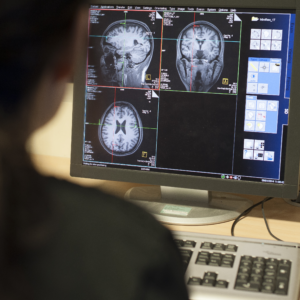Magnetic Resonance Imaging Unit

Magnetic Resonance Imaging (MRI) uses magnetic fields and radio waves to create images of bodies or other items placed in the bore of the MRI scanner. There are a number of different imaging modalities supported by MRI and which we use at CINN.
These modalities include structural MRI, in which high-resolution images can be used, for example, to describe the health status of the grey and white matter of the brain and other features of its morphology, such as the ventricles. In contrast to structural MRI, functional MRI (fMRI) measures changes in brain activity over time, or in response to an external stimulus or an internally generated action, by measuring the levels of oxygen in specific parts of the brain. The amount of oxygen a brain area consumes is proportional to the energy it uses, offering a window into the dynamics of regional brain function.
We also use other MRI techniques: for example, Arterial Spin Labeling (ASL) provides information about the flow of blood to and from different brain regions; diffusion MRI (dMRI) uses Diffusion Tensor Imaging (DTI) to provide a detailed picture of the structural connections between brain regions.
CINN houses a state-of-the-art Siemens MAGNETOM Prisma-fit 3T MRI Scanner, with a large selection of coils for clinical and research use. A dedicated stimulus presentation PC with MRI-compatible stimulus response pads and joysticks can be used to measure participant responses to behavioural and cognitive tasks presented on the screen. Supplementary instruments measuring physiological features, including eye tracking, skin conductance, breathing rate/volume, allow for real-time data performance monitoring and for the co-measurement of physiology and brain function.

